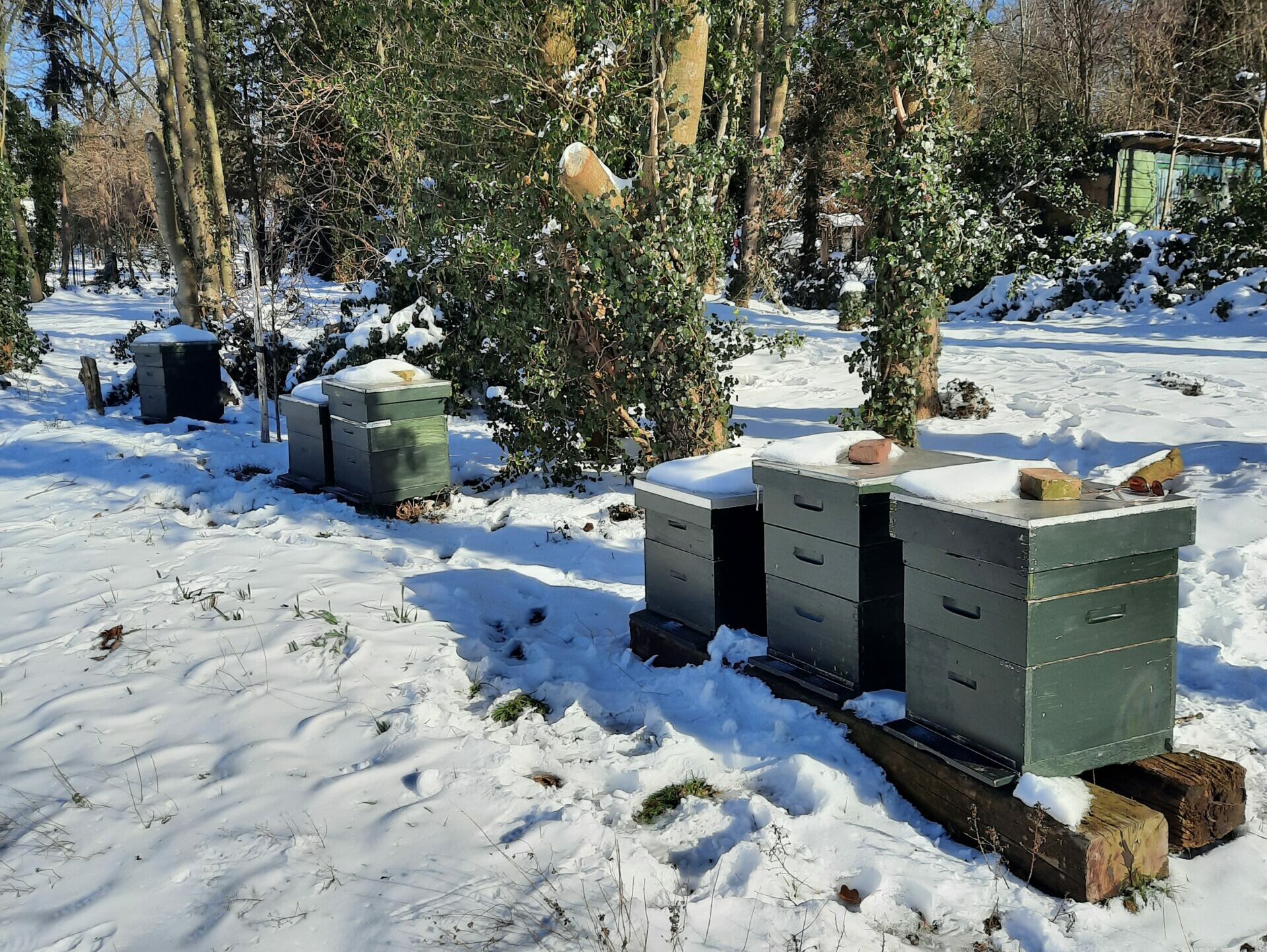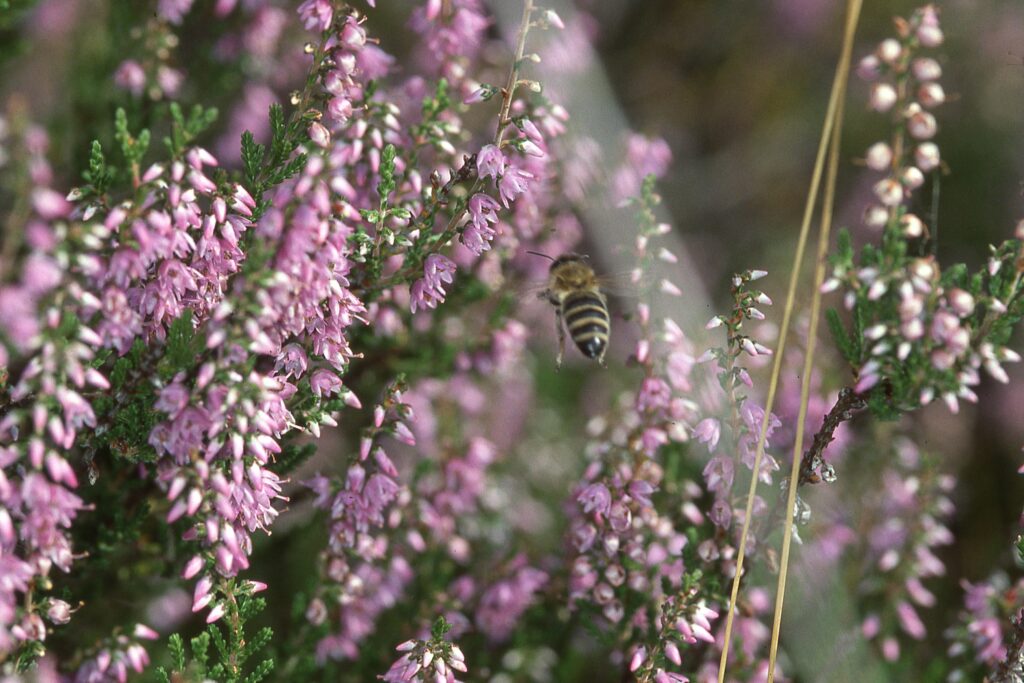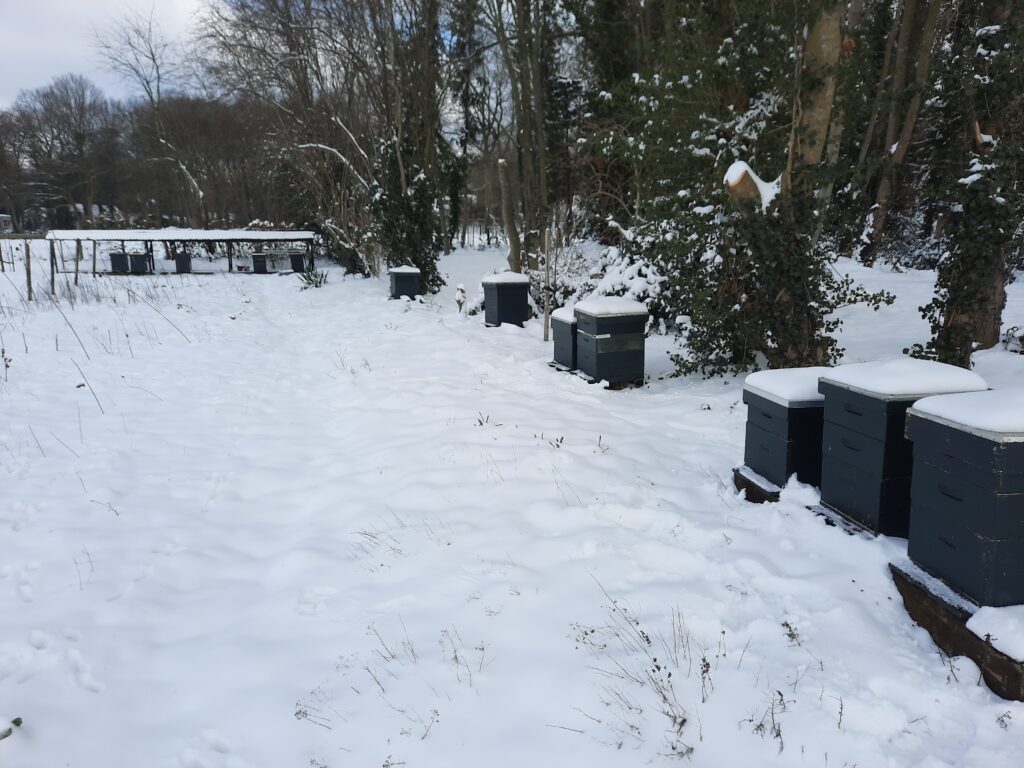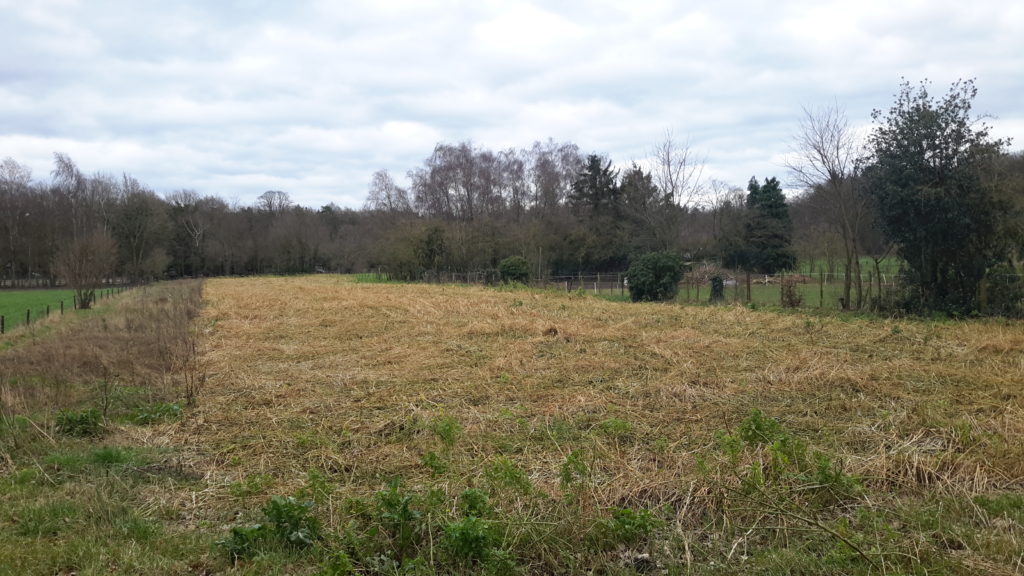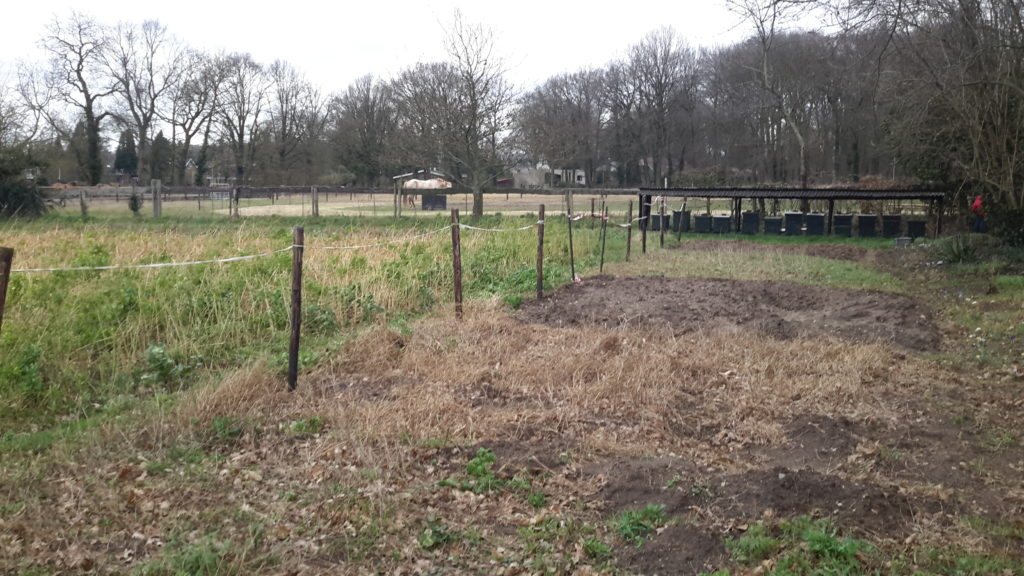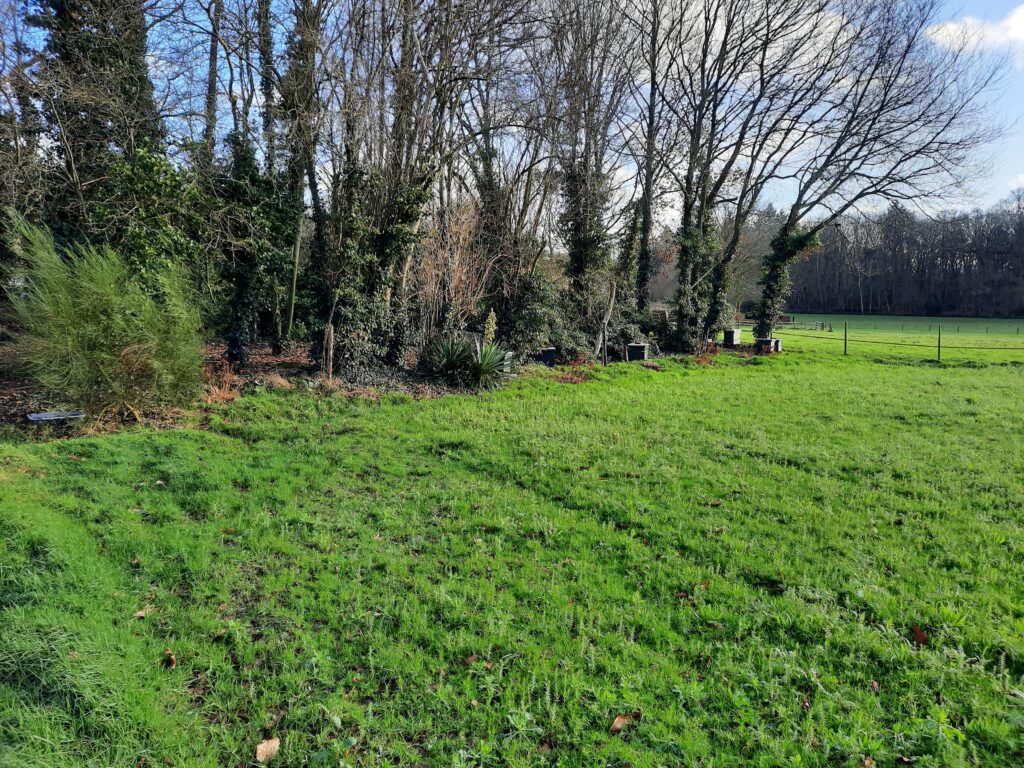
2024, like 2023, was a very rainy and warm year. There was no fruit honey to harvest, due to a cool and wet period during the fruit bloom, with few flying days. It was striking that in April it was on average one degree colder than in March. In the first half of the month there were two warm periods, but a large part of the second half of the month was cool and wet. With 82 millimeters of rain, double the normal amount fell.
The summer and especially the heather flow – the colonies were located near Vierhouten on the North Veluwe – turned out very well.
Due to a clumsy driver, I broke my arm in mid-May, at a crucial moment in the bee year. Lifting containers was out of the question. Even lifting frames was difficult. To my great fortune, my wife stepped in, which led to some wonderful moments together at De Driest and for her to an express course in practical beekeeping.
All young queens have been locally mated in 2024, either at De Driest or in the Wageningen Binnenveld, where the nucleus colonies were placed for the first time. This latter location may not be so favourable for successful matings. I will investigate this further in 2025. In any case, due to the wet summer, the percentage of fertilised queens was on the low side this year: around 65%, which is less than usual at De Driest.
In 2025, I want to produce a few black P0 queens again at the Neeltje Jans mating station, mainly to contribute to the preservation of this breed, even though the black bee lags behind modern hybrids in terms of productivity and manageability. Who knows what hidden qualities the black bee still possesses, and then I am talking about Varroa resistance in particular.
The Varroa pressure in 2024 varied greatly from colony to colony, as is often the case. Looking back, many colonies have received some form of treatment. This was necessary because the Varroa pressure would otherwise have exceeded the damage threshold. Perhaps the black queens to be produced in 2025 can improve this. In particular, I was able to cut the necessary drone comb in the colonies. Consequently, I could skip the winter treatment in about half of all colonies, because there were only very few mites in them at that time.
In the fall, as in 2023, I did not perform three-day mite counts on the Varroa, but only monthly counts. This is certainly less accurate and does not allow for the construction of mite fall curves, but it is considerably less work.
At the time of writing, January 2025, all colonies are still alive.
The winter rye, sown in the autumn of 2023, only gave a moderate yield. At the time of ripening, there was a very rainy period, which did not do the final quality of the grain any good. Nevertheless, the end result was still within the standards, so that the rye was suitable for baking bread. The straw went, as usual, to the organic farm De Hooilanden.
